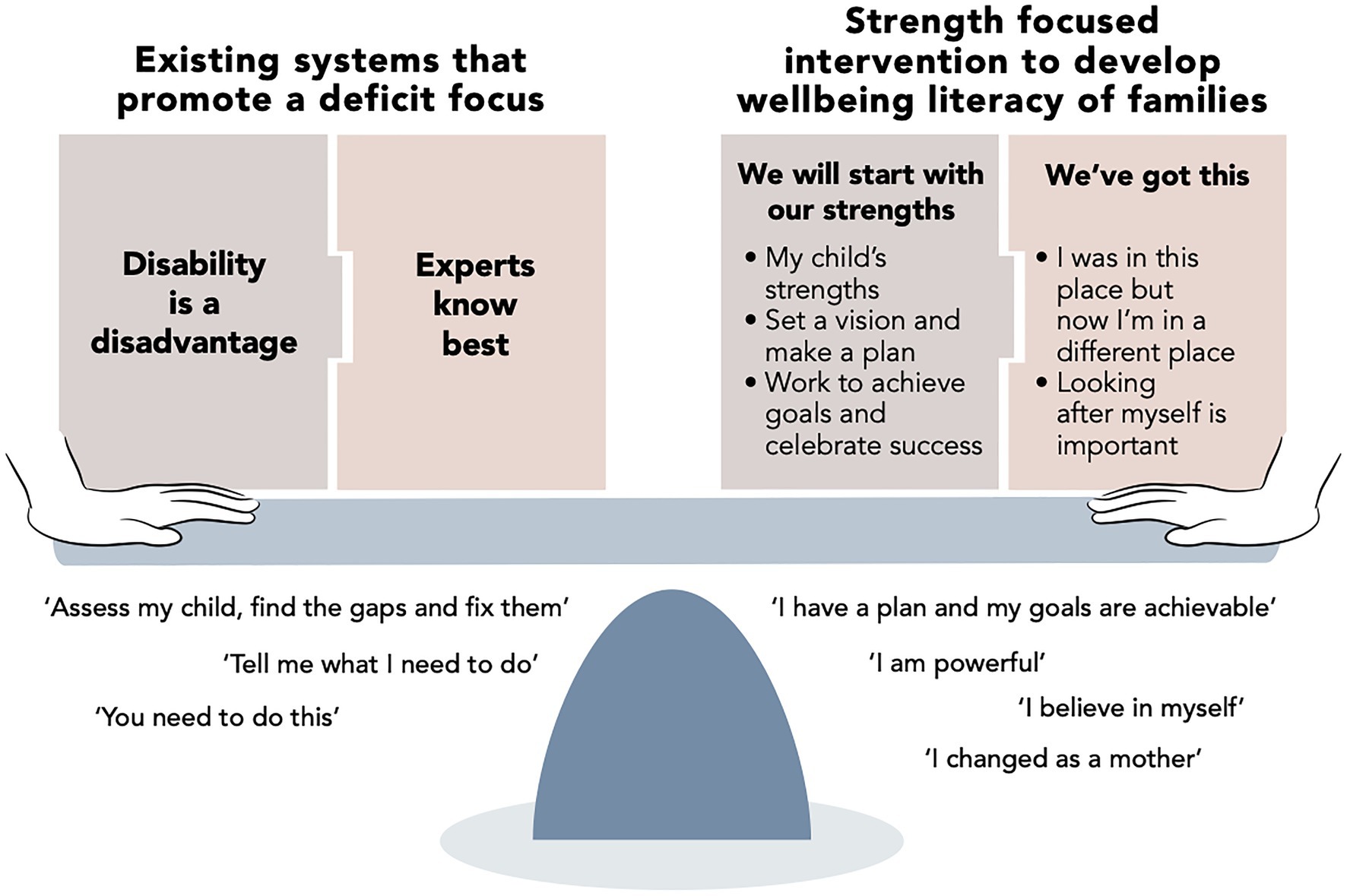How Do Families Decide on Child Care? A New Study Examines Early Learning and Care Decision-Making – First Five Years Fund

Report on Family Childcare Decision-Making and its Implications for Sustainable Development Goals
Introduction
A recent study conducted by researchers in partnership with Somerville Public Schools, Massachusetts, investigated the decision-making processes of families seeking early learning and care. The findings, published in Early Childhood Research Quarterly, provide critical insights into the barriers and preferences that shape family choices. This report analyzes these findings through the lens of the United Nations Sustainable Development Goals (SDGs), highlighting how access to childcare is integral to achieving targets related to poverty reduction (SDG 1), quality education (SDG 4), gender equality (SDG 5), decent work (SDG 8), and reduced inequalities (SDG 10).
The research employed a mixed-methods approach, utilizing administrative data, family surveys, and qualitative interviews to create a holistic understanding of the challenges families face within a mixed-delivery childcare system.
Key Findings and Alignment with Sustainable Development Goals
The study identified four primary dimensions impacting family decisions, each with significant implications for sustainable development.
1. Information Accessibility and Systemic Inequities
This dimension relates directly to SDG 10 (Reduced Inequalities) and SDG 4 (Quality Education).
- Families universally reported that finding information on childcare options was a challenging and time-consuming process due to a lack of centralized, universal resources.
- Significant disparities in information access were observed. Families with low incomes, non-English speaking households, and those with children with disabilities experienced exacerbated challenges, undermining the goal of reducing inequalities.
- A heavy reliance on informal personal networks for information creates an inequitable system where access to quality care (a key component of SDG 4.2) is dependent on social capital.
- The report noted that mothers, in particular, spent extensive time on this research, highlighting a gendered burden that impacts progress toward SDG 5 (Gender Equality).
2. Affordability and Economic Barriers
The cost of care is a critical factor that intersects with SDG 1 (No Poverty) and SDG 8 (Decent Work and Economic Growth).
- Cost was a dominant factor for a majority of families (63%), frequently forcing them to make choices that conflicted with their preferences for quality or location.
- A lack of awareness about available financial assistance and subsidized programs prevents eligible families from accessing affordable care, perpetuating cycles of poverty and limiting economic mobility.
- Even free public preschool programs were often unworkable for families who could not afford the necessary wrap-around care, demonstrating a critical gap in supporting parents’ participation in the workforce (SDG 8).
3. Child Development and Educational Quality
This finding is central to the mission of SDG 4 (Quality Education), specifically Target 4.2, which aims to ensure all children have access to quality early childhood development and pre-primary education.
- The most prominent factor for families (71%) was the opportunity for their child’s social interaction and development.
- Families actively sought arrangements that would prepare their children for kindergarten, aligning directly with the objectives of SDG 4.
- Preferences for cultural consistency between home and care settings were noted, emphasizing the need for diverse and inclusive educational environments.
- Despite a desire for stability, practical constraints related to availability and cost led many families to use multiple, fragmented care arrangements, which can disrupt the continuity crucial for early childhood development.
4. Integrated Family Needs and Community Infrastructure
The need to balance multiple family priorities underscores the role of childcare as essential infrastructure for SDG 8 (Decent Work) and SDG 11 (Sustainable Cities and Communities).
- Families must balance childcare with overall family logistics. Location relative to home (valued by 67% of families) and work (24%) was a key consideration, reinforcing that childcare access is a prerequisite for parental employment.
- The logistical challenges of managing multiple children in different locations influenced family choices, highlighting a need for more integrated and convenient community services.
- The study found that urban families were more likely to use center-based care, indicating that solutions must be tailored to the specific characteristics of a community to be sustainable.
Conclusion and Policy Recommendations for Sustainable Progress
The study concludes that improving childcare access requires a multifaceted approach that moves beyond one-size-fits-all solutions. To create sustainable childcare systems that advance the SDGs, policymakers and program designers must address the interconnected challenges families face. The following actions are recommended:
- Enhance Information Equity (SDG 10): Develop and fund centralized, multilingual, and accessible information hubs to ensure all families, regardless of socioeconomic status or background, can make informed choices.
- Ensure True Affordability (SDG 1, SDG 8): Structure financial assistance to cover the full cost of care required for parental employment, including wrap-around services, thereby reducing poverty and boosting economic participation.
- Promote High-Quality, Integrated Education (SDG 4): Invest in a mixed-delivery system that offers diverse, high-quality options and promotes continuity between early learning and primary schooling to achieve better educational outcomes.
- Build Responsive Community Infrastructure (SDG 11): Design childcare systems that are integrated with community planning, considering family work schedules, transportation routes, and the needs of families with multiple children to build more inclusive and sustainable communities.
Analysis of Sustainable Development Goals (SDGs) in the Article
1. Which SDGs are addressed or connected to the issues highlighted in the article?
- SDG 4: Quality Education – The article’s primary focus is on early learning, child care, and pre-primary education.
- SDG 10: Reduced Inequalities – The text highlights disparities in access to child care for different groups, such as low-income families, non-English speakers, and families with disabled children.
- SDG 8: Decent Work and Economic Growth – The article links child care directly to parents’ ability to work.
- SDG 5: Gender Equality – It implies an unequal burden of care, noting that “Many mothers noted the extensive amount of time they spent compiling information.”
- SDG 1: No Poverty – The theme of affordability and the financial strain of child care costs on families is a central point.
2. What specific targets under those SDGs can be identified based on the article’s content?
- Target 4.2: “By 2030, ensure that all girls and boys have access to quality early childhood development, care and pre-primary education so that they are ready for primary education.”
- Explanation: The entire article is dedicated to this target, discussing the challenges families face in finding “affordable, high-quality care” and the factors that influence their decisions regarding “early education and care.” It examines how arrangements meet “child development needs” to prepare them for kindergarten.
- Target 10.2: “By 2030, empower and promote the social, economic and political inclusion of all, irrespective of age, sex, disability, race, colour, ethnicity, origin, religion or economic or other status.”
- Explanation: The article directly addresses this by identifying specific inequalities. It states that “low-income families, families whose primary language is not English, and those with disabled children often experience differences in access to child care resources.”
- Target 8.5: “By 2030, achieve full and productive employment and decent work for all women and men…”
- Explanation: The article connects child care to employment by highlighting that a key dimension for families is finding arrangements that support “parents’ work.” It notes that families must balance work schedules and commuting paths, and that a lack of suitable care can be a barrier to employment.
- Target 5.4: “Recognize and value unpaid care and domestic work through the provision of public services, infrastructure and social protection policies…”
- Explanation: The article implies the unequal burden of unpaid care work by stating, “Many mothers noted the extensive amount of time they spent compiling information.” The call for “sufficient federal funding for early learning and care services” aligns with the provision of public services to alleviate this burden.
- Target 1.3: “Implement nationally appropriate social protection systems and measures for all…”
- Explanation: The article discusses affordability as a major barrier and points out that “many families were unaware of the free or reduced-cost programs and financial supports they may be eligible for.” These programs are a form of social protection aimed at making essential services accessible and reducing poverty.
3. Are there any indicators mentioned or implied in the article that can be used to measure progress towards the identified targets?
- Indicator for Target 4.2: Participation rate in organized learning.
- Explanation: The article implies this indicator by stating that “84% of families surveyed using child care for at least five hours per week” and by analyzing enrollment data in various programs like public preschool and center-based care.
- Indicator for Target 10.2: Proportion of people reporting having personally felt discriminated against or harassed.
- Explanation: The article implies a need to measure disparities in access. An indicator could be the “differences in access to child care resources” experienced by specific groups mentioned: “low-income families, families whose primary language is not English, and those with disabled children.” The finding that “urban families were more likely to enroll in center-based programs than rural families” also serves as a measurable indicator of inequality.
- Indicator for Target 1.3: Proportion of population covered by social protection floors/systems.
- Explanation: An implied indicator is the awareness and utilization of child care subsidies. The article notes that “many families were unaware of the free or reduced-cost programs and financial supports they may be eligible for,” suggesting that tracking the uptake of these supports is a key metric. The fact that “Cost was discussed by 63% of families” also indicates the financial pressure that social protection aims to alleviate.
- Indicator for Target 5.4: Proportion of time spent on unpaid domestic and care work.
- Explanation: The article provides a qualitative indicator by mentioning “the extensive amount of time they [mothers] spent compiling information” on child care. This suggests that measuring the time spent by different genders on securing care could be a way to track progress.
4. Summary Table of SDGs, Targets, and Indicators
| SDGs | Targets | Indicators (Mentioned or Implied in the Article) |
|---|---|---|
| SDG 4: Quality Education | 4.2: Ensure access to quality early childhood development, care, and pre-primary education. |
|
| SDG 10: Reduced Inequalities | 10.2: Empower and promote the social, economic, and political inclusion of all. |
|
| SDG 8: Decent Work and Economic Growth | 8.5: Achieve full and productive employment and decent work for all. |
|
| SDG 5: Gender Equality | 5.4: Recognize and value unpaid care and domestic work. |
|
| SDG 1: No Poverty | 1.3: Implement nationally appropriate social protection systems. |
|
Source: ffyf.org

What is Your Reaction?
 Like
0
Like
0
 Dislike
0
Dislike
0
 Love
0
Love
0
 Funny
0
Funny
0
 Angry
0
Angry
0
 Sad
0
Sad
0
 Wow
0
Wow
0


-1920w.png?#)







































































